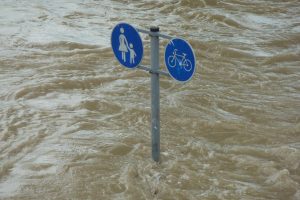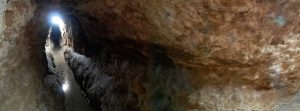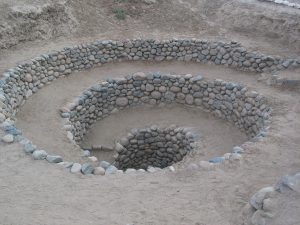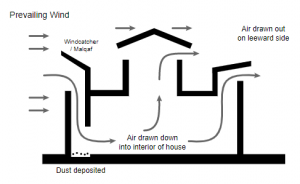Geo-Engineering Concepts for Arctic Re-freezing
 I’d been thinking for months about ideas to create Arctic refreezing mechanisms. In June 2022, after reading about Sir David Attenborough’s “refreezing the Arctic” project at the Centre for Climate Repair at U.Cambridge, sent the Proximity of Desire framework (link to “B”); and then, after asking whether there was interest, sending the concepts.
I’d been thinking for months about ideas to create Arctic refreezing mechanisms. In June 2022, after reading about Sir David Attenborough’s “refreezing the Arctic” project at the Centre for Climate Repair at U.Cambridge, sent the Proximity of Desire framework (link to “B”); and then, after asking whether there was interest, sending the concepts.
Here is the concepts note sent to U.Cambridge [link].
Qanats & Windcatchers for Lytton BC
A civil engineering concept to help Lytton resiliently mitigate fires for generations to come…
 The Village of Lytton, BC had a catastrophic fire in 2021, after a wildfire started in the early evening of June 30, 2021, after suffering the highest temperature ever recorded in Canada. After percolating ideas in the back of my head for a year, last weekend, I wrote up a suggestion and sent it to the Village of Lytton and Lytton First Nation; and then afterwards to leaders in the insurance sector (Insurance Institute of Canada, CISO, Institute of Catastrophic Loss Reduction). The suggestion is to propose a way to mitigate future risk in Lytton and similarly situated communities. The concept is to use natural resources to help retard future fires. The idea is to consider the opportunities that arise when the rivers and architecture of the landscape is seen as a fire defence resource. This is an example of my practice to periodically intellectually refresh…by taking a day, here-and-there, to do something else entirely different. Exercise for the imaginative mind.
The Village of Lytton, BC had a catastrophic fire in 2021, after a wildfire started in the early evening of June 30, 2021, after suffering the highest temperature ever recorded in Canada. After percolating ideas in the back of my head for a year, last weekend, I wrote up a suggestion and sent it to the Village of Lytton and Lytton First Nation; and then afterwards to leaders in the insurance sector (Insurance Institute of Canada, CISO, Institute of Catastrophic Loss Reduction). The suggestion is to propose a way to mitigate future risk in Lytton and similarly situated communities. The concept is to use natural resources to help retard future fires. The idea is to consider the opportunities that arise when the rivers and architecture of the landscape is seen as a fire defence resource. This is an example of my practice to periodically intellectually refresh…by taking a day, here-and-there, to do something else entirely different. Exercise for the imaginative mind.1page PDF: [Link] = (A) Local natural resources + (B) Combining civil engineering technologies + (C) new civil infrastructure administrative framework,
A) (See PDF)
B) Civil Engineering Idea
Combine Lytton’s location architecture + two ancient technologies into a system to create a local “cooling bubble”:
- Water sources (currently the Thompson R. and Fraser R. (in future, perhaps aquifers and springs?)
- Moisture-Sourcing subsurface “Qanats” [underground aqueducts, known as Qanats in the Middle East and as “Puquios” in the coastal deserts of southern Peru and northern Chile);
- Natural wind and heat-activated Air-Cooling “Windcatchers”):
C) Fire Protection Infrastructure Idea
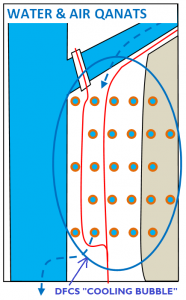 Create a civil infrastructure administration mechanism called the “District Fire Cooling System (DFCS)” to emulate the familiar “District Energy System (DES)”: https://toolkit.bc.ca/tool/district-energy-systems-2/ The concept here is to use natural resources to create a sustainable DFCS fire retarding system for the village.
Create a civil infrastructure administration mechanism called the “District Fire Cooling System (DFCS)” to emulate the familiar “District Energy System (DES)”: https://toolkit.bc.ca/tool/district-energy-systems-2/ The concept here is to use natural resources to create a sustainable DFCS fire retarding system for the village.Notes:
- Inside Qanat: Naeinsun, CC BY-SA 3.0 <https://creativecommons.org/licenses/by-sa/3.0>, via Wikimedia Commons: https://commons.wikimedia.org/wiki/File:Insideqanat.JPG
- Puquios in Peru: Ab5602, Public domain, via Wikimedia Commons: https://commons.wikimedia.org/wiki/File:Puquios_aqueduct_Nazca_Peru.JPG
- Windcatcher Diagram: Fred the Oyster, CC BY-SA 4.0 <https://creativecommons.org/licenses/by-sa/4.0>, via Wikimedia Commons: https://commons.wikimedia.org/wiki/File:Malqaf.svg

